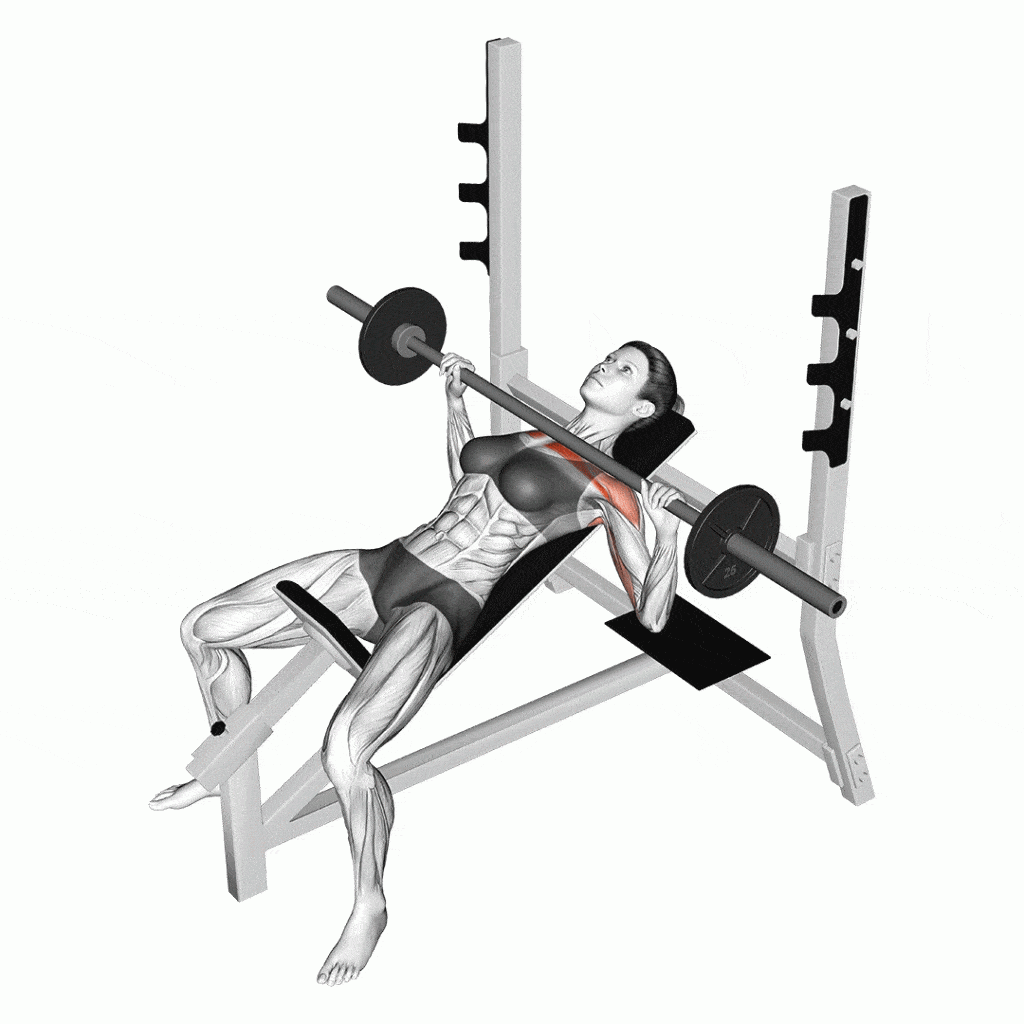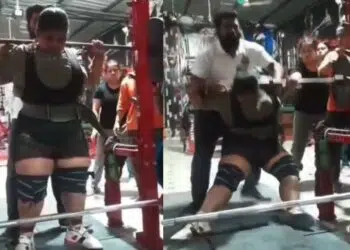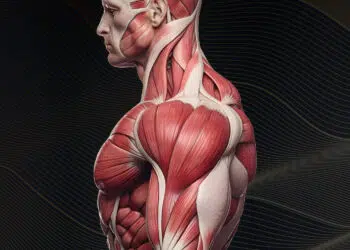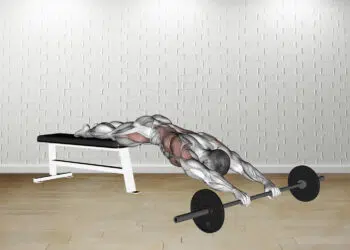The incline bench press is a popular upper body exercise that targets the upper chest muscles. It involves lying back on a bench angled at 30-45 degrees and pushing a weight upwards.
When performed correctly, the incline bench press can build size and strength in the upper pectorals. It also works the front deltoids, triceps, and other assisting muscles.
This in-depth guide will teach you proper incline bench press form, plus variations, benefits, and common mistakes.
What Is an Incline Bench Press?
The incline bench press is an upper body exercise performed lying back on a bench angled at 30-45 degrees.
It allows you to safely lift heavier loads than shoulder presses to build strength and size in the upper chest muscles.
Level Up Your Fitness: Join our 💪 strong community in Fitness Volt Newsletter. Get daily inspiration, expert-backed workouts, nutrition tips, the latest in strength sports, and the support you need to reach your goals. Subscribe for free!
By adjusting the bench to an incline, this exercise places greater tension on the upper pecs near the clavicles. The incline press emphasizes the clavicular head of the pectoralis major.
The incline bench press can be done using barbells, dumbbells, machines, cables, or bodyweight. It’s an accessible way to build an impressive upper chest when added to a training program.
- Target Muscle Group: Clavicular (Upper) Pectoralis Major
- Type: Strength
- Mechanics: Compound
- Equipment: Incline Bench Press
- Difficulty: Intermediate
What Muscles Does the Incline Bench Press Work?
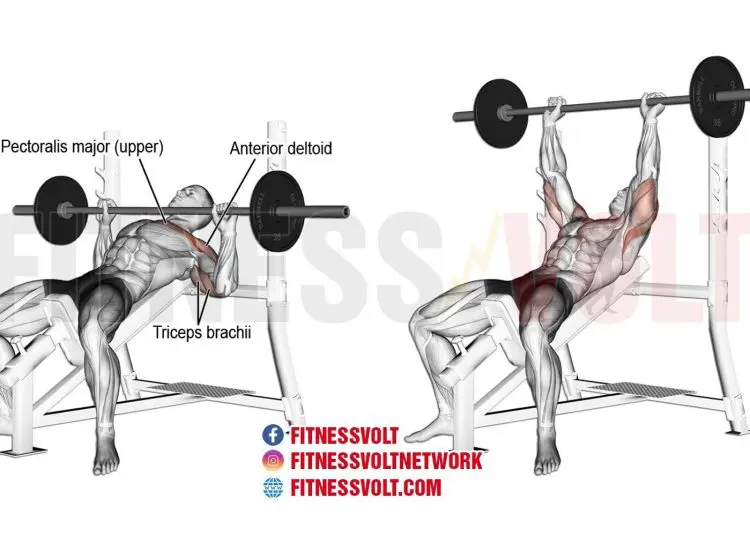
The incline bench press primarily targets the clavicular head of the pectoralis major muscle. This makes up the upper portion of the chest and attaches to the collarbone and shoulder blade.
When you lie back on an incline bench set to 30 degrees and press a weight upwards, you force the upper pec fibers to contract maximally. This leads to tremendous hypertrophy and strength gains.
As a compound exercise, the incline bench press also heavily involves the front deltoid muscles of the shoulders. The anterior delts aid your pecs in pushing the weight upwards. Your triceps muscles also assist by extending at the elbow joint.
Secondary movers include your upper trapezius, core musculature for stabilization, and biceps for elbow support.
In summary, the incline bench press builds impressive mass and power in your:
- Upper pectoralis major
- Front deltoids
- Triceps
Secondary muscles worked include:
- Upper trapezius – Helps stabilize and retract the scapulae.
- Core – Isometrically contracts to stabilize the body.
- Biceps – Stabilize the elbow joint.
It’s one of the most effective ways to build an imposing upper body physique.
Does the Incline Bench Press Affect the Shoulders?
While the incline bench press targets the chest, front delts, and triceps, it does also engage the shoulders as stabilizers.
Research shows it involves more shoulder activation than the flat bench but less than overhead presses.
The inclined position allows you to lift heavier than overhead presses with less shoulder strain. However, the shoulders work isometrically to stabilize the joints.
So while not the prime movers, the shoulders play an important assistance role. Focus on proper retracted shoulder form to minimize strain.
When performed with control, the incline press provides shoulder-friendly pressing for balanced development.
What Is the Best Incline Bench Press Angle?
Research shows that 30 degrees is the optimal incline bench angle for upper pec activation.
Level Up Your Fitness: Join our 💪 strong community in Fitness Volt Newsletter. Get daily inspiration, expert-backed workouts, nutrition tips, the latest in strength sports, and the support you need to reach your goals. Subscribe for free!
Angles less than 30 degrees begin to target the mid chest. And angles greater than 30 degrees increase front delt involvement.
30 degrees minimizes stress on the shoulder joint while maximizing contraction of the clavicular pec fibers. This leads to the greatest chest development.
For adjustable benches, set the backrest to 30 degrees. For fixed benches, use a 30 or 45 degree incline. Avoid steeper angles.
How to Perform the Incline Bench Press
Follow these steps for proper technique:
- Lie back on the bench with your eyes below the bar. Plant your feet firmly on the floor.
- Grip the bar just outside shoulder width with an overhand grip. Wrap both thumbs around the bar.
- Arch your back slightly and retract your shoulders to engage your upper back.
- Lift the bar off the rack and hold it above your lower chest or upper abdomen.
- Inhale, tighten your core, and slowly lower the bar to your lower sternum. Keep your wrists straight.
- Pause briefly when the bar touches your body then drive it back up forcefully until your elbows lock out.
- Focus on squeezing your pecs at the top. Do not bounce the bar off your chest.
- Complete 2-4 sets of 6-12 repetitions, increasing the weight when you can hit the higher end of the rep range.
Tips for Quality Reps
- Keep your elbows at a 45 degree angle tucked close to your sides.
- Pull your shoulder blades down and back to engage your upper back.
- Use a full range of motion for maximal pec stimulation.
- Ask a spotter for assistance with heavy attempts.
- Keep the movement controlled – no bouncing.
Mastering incline bench press technique takes practice, but is essential for upper chest development.
Incline Bench Press Variations
While the traditional barbell incline bench press is best for pure strength gains, there are many variations to build size:
Dumbbell Incline Press
- Allows unilateral, alternating training
- Increased range of motion compared to barbell
- Easier to go deeper and get chest stretch
Smith Machine Incline Press
- Fixed bar path reduces stabilization demands
- Allows focus on just pushing the weight
- Can use higher volume with lighter weight
Incline Dumbbell Fly
- Emphasizes the stretch and chest contraction
- Builds muscle without heavy loading
- Fly motion increases time under tension
Incline Dumbbell Pullover
- Hits the lats and serratus anterior too
- Adds diversity to your training
- Challenging full body exercise
Decline Push Ups
- Bodyweight alternative without equipment
- Hits upper pecs more than standard push ups
- Travel-friendly and can do high reps
Change up your incline presses every 4-8 weeks using these variations to thoroughly work your upper chest from multiple angles.
Benefits of Adding Incline Presses to Your Routine
Incorporating incline presses into your training provides many benefits beyond just bigger upper pecs:
Full Chest Development
Hitting your chest from multiple angles provides complete pectoral training. Incline presses fill in the gap that flat benching misses.
Shoulder-Friendly Pressing
The incline bench press allows you to lift heavier weights than overhead presses while placing less strain on the shoulders.
Functional Strength Gains
Pushing heavy weights builds tremendous real-world strength through your entire upper body.
Hormone Stimulation
Big compound lifts boost anabolic hormones like testosterone and growth hormone.
Training Variety
The incline press brings diversity to your program. Variation is key for continued gains.
If you want to take your chest development to the next level, make sure you incorporate incline pressing into your workouts.
Common Incline Bench Press Mistakes
While a simple movement in theory, many lifters make mistakes that limit results and increase injury risk. Avoid these errors:
- Excessive Incline Angle – Above 30 degrees overworks delts. Stick to 30 degrees.
- No Scapular Retraction – Can impinge shoulders. Retract shoulder blades.
- Bouncing the Bar – Uses momentum, reduces muscle tension. Control the weight.
- Overarching the Lower Back – Unsafe for the spine. Keep hips on the bench.
- Elbow Flare – Increases shoulder strain. Keep elbows tucked at 45 degrees.
- Touching Too High on Chest – Shortens range of motion. Touch at bottom of sternum.
With practice and focus on technique, you’ll master proper form and reap the upper body benefits.
Takeaway
The incline bench press builds impressive upper chest size and strength. Set your bench to 30 degrees, keep your shoulders safe, and use controlled form on every rep.
Mix in variations like dumbbell and Smith machine incline presses too. Adding this exercise to your current regimen will build a thicker, fuller chest.
What are you waiting for? Use these incline bench press tips and get ready to put slabs of muscle onto your upper pecs!
Interested in measuring your progress? Check out our strength standards for Bench Press, Incline Dumbbell Fly, Push Ups, and more.

